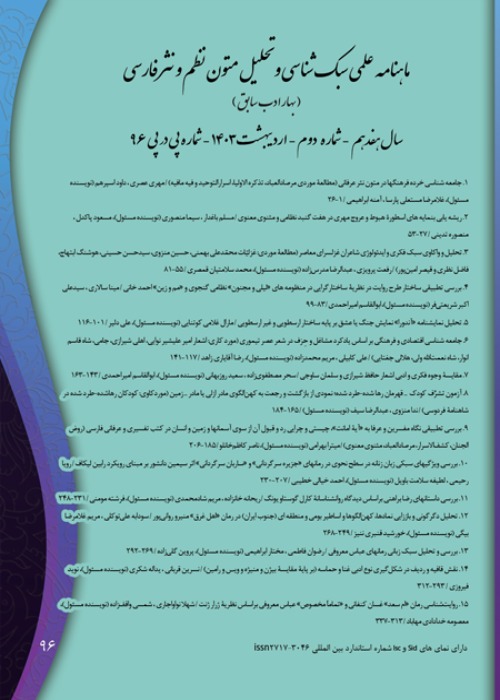Stylistics of the Odes (Qasidas) of Mirza Seyyed Yahya Modarres alias Fadaei Yazdi
Mirza Seyyed Yahya Modares, deceased (1282 AH), nicknamed Fadai Yazdi, is one of the scientific and literary figures of the Qajar era, who has numerous works in poetry and prose in Persian and Arabic. His divan is a collection of Sonnets (Ghazal), Odes (Qasida), Mathnavis (Masnavi), Pieces (Ghat’e) and Quatrains (Robaei). In addition, he has two poems in Arabic. This article is dedicated to examining the stylistic and content characteristics of his poems from linguistic, literary and intellectual aspects. The purpose of this study is to determine the ability of the poet as one of the ode writers of the Literary Return period.
The present study is based on a descriptive-analytical method with library tools which has been done on a valid manuscript with the poet's own handwriting in the personal library of Seyyed Yahya Modarresi.
Fadai Yazdi has proved his ability in composing praise poems. His skill is in simile and metaphorical illustrations in the introduction of the odes. His poetry is full of beautiful literary industries. The use of expression techniques, especially sensory-to-sensory similes and novel balances and allusions, has a high frequency in his poetry. The choice of Bahr Mujtas and Raml makes the weight fit with the content and the use of heavy Arabic rhymes is one of the characteristics of his poetry. Intellectually, the main theme of his poems is praise, and his main praise is the great men of religion, especially Imam Ali (as). In the content of Fadaei Yazdi's Odes, the description of nature and the beloved and also complaining about the life and the expression of despair and hopelessness can be observed.
Fadaei Yazdi has been a powerful ode composer. One of the prominent features of his poetry is the frequent use of words and combinations of Arabic language, which sometimes makes it difficult for the reader to understand the meanings of the poem. Like his contemporary poets, he followed Khorasani style and imitated predecessors and has considered their poetry in choosing weight, rhyme and themes of his poems. He was well acquainted with the poetic features of previous poets and has been able to reflect their linguistic, literary and intellectual features in his poems.
Fadaei Yazdi , Qajar , Ode (Qasida) , praise , stylistics , simile
- حق عضویت دریافتی صرف حمایت از نشریات عضو و نگهداری، تکمیل و توسعه مگیران میشود.
- پرداخت حق اشتراک و دانلود مقالات اجازه بازنشر آن در سایر رسانههای چاپی و دیجیتال را به کاربر نمیدهد.


